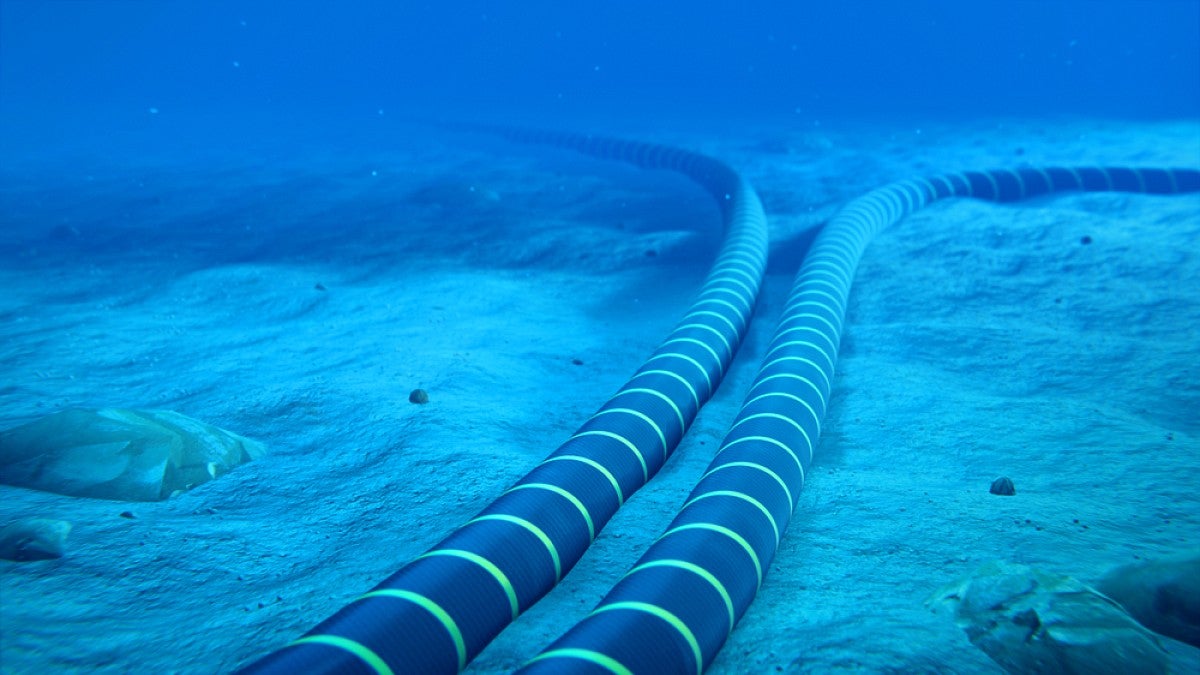A University of Oregon doctoral student is exploring how technological infrastructure located on the ocean floor, particularly submarine internet cables, has influenced people’s lives in the Pacific Northwest.
Hayley Brazier is driven by two big questions: How and why have people come to depend so heavily on infrastructure scattered across the ocean floor? And how would a natural disaster affect coastal society?
The coronavirus crisis, she said, has provided a sense of urgency to her research, which she began upon her arrival at the UO in 2015. She also worries, she said, about how a Cascadia subduction zone earthquake might disrupt vital communications that rely especially on internet connections linking the world via cables installed in the oceans.
“Every day I think to myself, where would we be during this pandemic without a high-functioning, high-capacity internet infrastructure?” Brazier said. “Most people have little clue how indebted they are to this hidden system of cables in the ocean and how closely it connects them to a web of technologies installed on the seafloor.”
Brazier, a doctoral candidate in the Department of History, is visiting libraries and museums from Alaska to California, as well as in the National Archives and Smithsonian Institution, to study documents that shed light on the history of building infrastructure on the ocean floor and how society has changed to take advantage of it.
The first transoceanic seafloor cables were laid in the 1850s for telegraph communications. Today, cables along ocean floors carry some 95 percent of the world’s international internet and telephone traffic.
Her focus has been strengthened this academic year during her graduate research fellowship at the Wayne Morse Center for Law and Politics. She’s also moving forward with new National Science Foundation and Smithsonian Institution grants, plus a new dissertation fellowship from the UO's Center for Environmental Futures.
Advisers on her research are professors Mark Carey, Marsha Weisiger and Ryan Jones, all in the Department of History, and David Sutherland in the Department of Earth Sciences. Carey, Weisiger and Sutherland also are core faculty members in the Environmental Studies Program.
Carey said Brazier’s research and dissertation will produce one of the first histories, in the form a book and a public exhibit, of fixed seafloor infrastructure in the northeast Pacific Ocean during the 20th and 21st centuries.
“I want the exhibit to inspire an interest in the undersea world, and I think one of the best ways to light that spark is through colorful artwork,” Brazier said. “The art will feature some undersea technologies, such as cables, but I’m also including paintings of deep-sea creatures, some real and some not, that have long flourished in Americans’ curiosity about the sea.”
Brazier’s ability to spot how people interact with their environments, Carey said, has helped his research on connections between society and icebergs in the North Atlantic Ocean. Carey, currently the director of the Environmental Studies Program and a faculty member in the Clark Honors College, has shown how drifting ice affects offshore oil, shipping, drinking water, communications and tourism.
“I learn a lot from Hayley about how to think about these ocean-society-ice interactions,” Carey said. “And even though she is working on technologies on the ocean floor, we ask similar questions about how and why the ocean matters for people, and vice versa. And both of us are showing that these interactions have deep roots.”
Brazier, who also is a 2019-2020 graduate research fellow of the Oregon Humanities Center, said her research is unveiling how today’s internet reflects a long history of work by governments, individuals and companies to install cables across the Pacific Ocean since 1902. Disruptions caused by an environmental disaster would have serious ramifications, she said.
“We are aware, for example, of the onshore risks associated with an impending Cascadia earthquake,” she said. “People are often less aware that the earthquake will cause a severe movement of the seafloor, possibly resulting in underwater avalanches and tousled underwater debris that could sever many fiber optic cables, potentially leaving thousands if not millions of us without a global internet connection.”
During the current global COVID-19 pandemic, Brazier added, it’s important not only to be thankful for those health care workers and others on the front lines but also the technicians and engineers who work at data centers, cable-landing stations and aboard cable ships to keep the internet infrastructure afloat.
“The history of submarine cable innovation has led to a modern system that has made our society a little more resilient during this pandemic,” she said. “On the other hand, this global outbreak also shows just how dependent we are on technology installed on the ocean floor.”
Brazier holds bachelor’s and master’s degrees, respectively, from the University of Kansas and Colorado State University and spent three years at the Public Lands History Center in Fort Collins, Colorado, before coming to the UO.
—By Jim Barlow, University Communications


